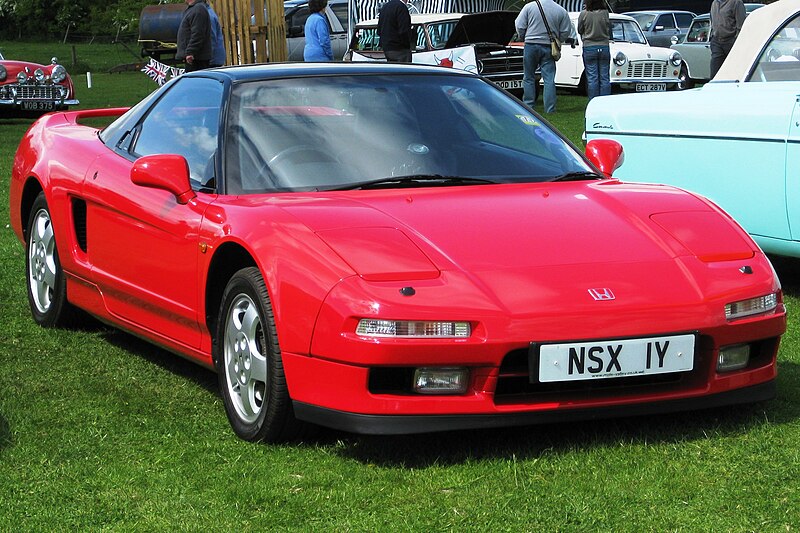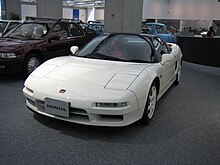 |
| Source: https://commons.wikimedia.org/wiki/File:Honda_NSX_reg_1991_2977_cc.JPG |
What do you get if you take a Honda with Pininfarina-designed body panel and inject sporty DNA into it's vein to challenge the likes of Ferrari? The answer is the Honda NSX. Though it went into production in 1990, it's development began in 1984.
Tracing it's root back to 1984, Honda approached Pininfarina, an Italian coachbuilder, to commission the HP-X (Honda Pininfarina eXperimental) concept with a 2 litre V6 engine mounted amidship.
| Source: http://www.topspeed.com/cars/honda/1990-2005-honda-nsx-ar1449.html |
During it's development period, the Honda management figured they could create a supercar that rivals the performance of the Ferrari while offering stellar reliability and lower price tag. As a result, the HP-X concept evolved into the NSX (New Sportscar eXperimental).
Honda set the Ferrari 348 as a benchmark. To fulfill Honda's vision to put the 348 to shame, out goes the 2 litre V6 from the concept and in goes a more powerful mid-mounted transverse 3 litre VTEC DOHC V6 with a variable length intake manifold that churned out 270 bhp to the rear wheels via a 5 speed manual. The use of titanium connecting rod further optimised the output of the 'Ferrari burner'.
In the chassis department, the Honda engineers received a helping hand from the late triple F1 champion, Ayrton Senna who clinched the 1988, 1990 and 1991 title driving for the McLaren Honda team. Thanks to his input, the NSX chassis gained the much needed rigidity, and much beefier double wishbone suspension all-round, endowing Honda's answer to Ferrari with an impressive cornering speed.
Weight reduction played a crucial role to the NSX's quest to demonstrate its performance credibility. This called for aluminium body panel and aluminium suspension arms. The extensive use of aluminium endowed the NSX with a curb weight of 1370 kg.
 |
| Source: https://en.wikipedia.org/wiki/Honda_NSX_(first_generation)#1992_NSX-R_.28Japanese_domestic_market.29 |
Throughout it's production run from 1990-2005, the NSX had gone through several upgrades. Most notably was when the first iteration of the NSX-Type R, or NSX-R, was rolled out the assembly line in 1992 featuring a much larger, more powerful 3.2 litre V6 tuned by Mugen, extensive weight reduction, extra beefy suspension and a more aggressive final drive ratio up to 4.235:1 from the stock 4.06:1 for eyeball-popping acceleration. In 2002, the NSX Type R received a facelift which saw the introduction of carbon fibre to further cut weight and boosting power via engine tweaking. The result is a Nurburgring lap time of 7:56 rivalling the Ferrari F360 Challenge Stradale, set by a former Japanese racing driver and current Best Motoring presenter, Motoharu Kurosawa.
To this writer, the NSX is Honda's stepping stone to challenge the European performance icon. The recently launched second generation NSX with it's new powertrain represents the stride Honda has made to become a major player in the high performance car industry.
No comments :
Post a Comment